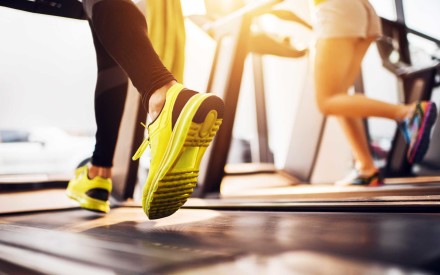Can’t Take 10,000 Steps a Day? Do This Instead
For days when it's not feasible to cram in the recommended 10,000 daily steps, this shorter routine has got you covered.

Taking 10,000 steps per day is a great way to get your daily dose of physical activity, but only 15 percent of American men and women regularly hit that healthy target, according to a brand-new study from Oregon State University. Lack of time is the most commonly cited obstacle, but fortunately, there’s an alternative that may be easier to fit into a tight schedule.
In the year-long study, published in the journal Medicine & Science in Sports & Exercise, Oregon State researchers found that although people who took more steps each day were typically healthier than those who took fewer steps, speed made a difference. Those who took 5,000 to 7,000 steps at a faster pace scored similar health benefits, including things like smaller waist circumference, lower blood pressure, and reduced BMI and cholesterol levels.
Based on these findings, study co-author John Schuna, Jr., PhD, assistant professor of kinesiology at OSU’s College of Public Health and Human Sciences, recommends aiming to take 3,000 steps each day at a brisk pace, which may be 100 or more steps per minute for two and a half hours, or 150 minutes, each week.
This healthy target fits with the guidelines of both the CDC and the Department of Health and Human Services, which advise that healthy adults get at least 150 minutes of moderate intensity activity or 75 minutes of vigorous aerobic activity each week. Examples of moderate intensity workouts include brisk walking, yoga, pushing a lawn mower, gardening, or riding a bike under 10 mph; examples of vigorous intensity activity include jumping rope, running, jogging, biking over 10 mph, and hiking uphill.
“Running or jogging two and a half miles is equivalent to walking 10,000 steps,” says Chauncey Graham, CSCS, an ACE Fitness Professional at Gold’s Gym in Washington, D.C. Higher-intensity workouts also come with added benefits, including improvements to your cardiorespiratory system. “A heightened level of exercise will prevent and lower your risk of many common diseases as well as obesity,” Graham says.
Most experts agree that a mix of high intensity and moderate intensity workouts yield the best results, however, if you’re dedicated to reaching your 10,000 steps each day via walking, try to take 3,000 of those steps at a faster pace. But some exercise is certainly better than none, so if you can spare only 60 seconds to sweat, try these exercises that will transform your body.



